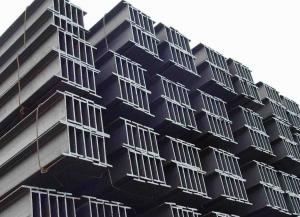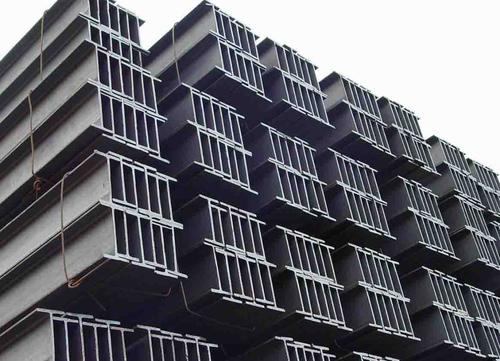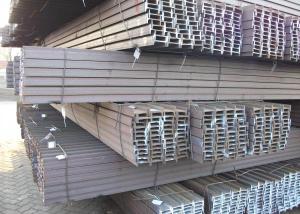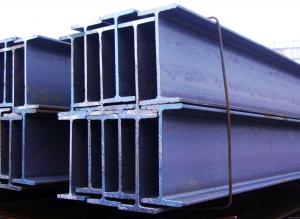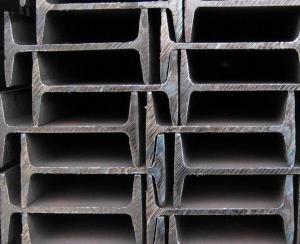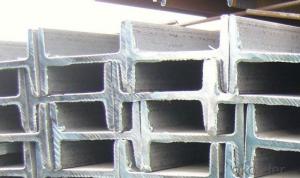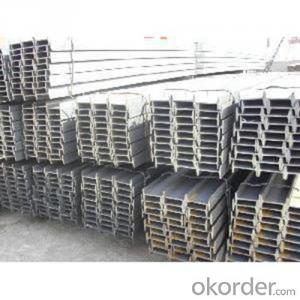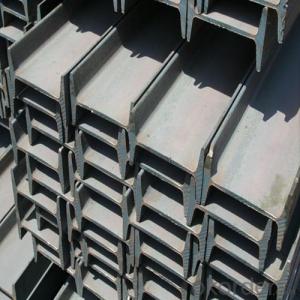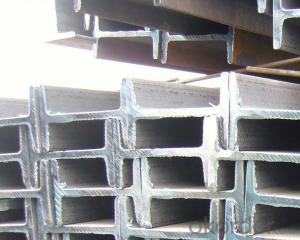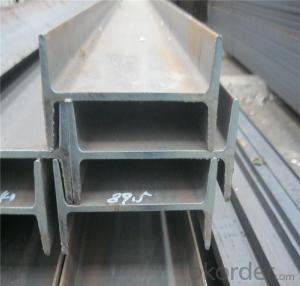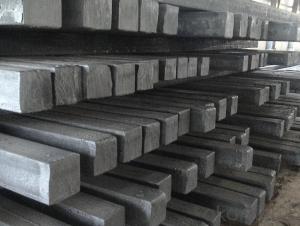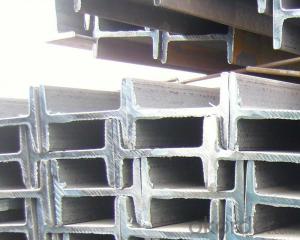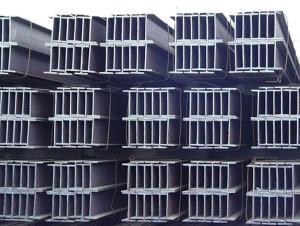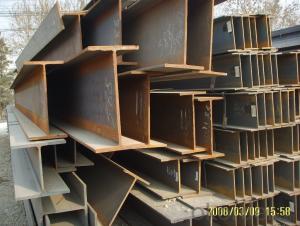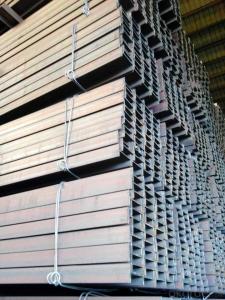IPE Beam 80mm-270mm with Material Grade GB-Q235
- Loading Port:
- Tianjin
- Payment Terms:
- TT or LC
- Min Order Qty:
- 25 m.t.
- Supply Capability:
- 10000 m.t./month
OKorder Service Pledge
OKorder Financial Service
You Might Also Like
Product Description:
OKorder is offering high quality Hot Rolled Steel I-Beams at great prices with worldwide shipping. Our supplier is a world-class manufacturer of steel, with our products utilized the world over. OKorder annually supplies products to European, North American and Asian markets. We provide quotations within 24 hours of receiving an inquiry and guarantee competitive prices.
Product Applications:
1. Supporting members, most commonly in the house raising industry to strengthen timber bears under houses. Transmission line towers, etc
2. Prefabricated structure
3. Medium scale bridges
4. It is widely used in various building structures and engineering structures such as roof beams, bridges, transmission towers, hoisting machinery and transport machinery, ships, industrial furnaces, reaction tower, container frame and warehouse etc.
Product Advantages:
OKorder's Steel I-Beams are durable, strong, and resist corrosion.
Main Product Features:
· Premium quality
· Prompt delivery & seaworthy packing (30 days after receiving deposit)
· Corrosion resistance
· Can be recycled and reused
· Mill test certification
· Professional Service
· Competitive pricing
Product Specifications:
1. Invoicing on theoretical weight or actual weight as customer request
2. Standard: EN10025, GB Standard, ASTM
3. Grade: Q235B, Q345B, SS400, ASTM A36, S235JR, S275JR
4. Length: 5.8M, 6M, 9M, 12M as following table
5. Sizes: 80mm-270mm
Dimensions(mm) | |||||
| h | b | s | t | Mass Kg/m |
IPE80 | 80 | 46 | 3.80 | 5.20 | 6.00 |
IPE100 | 100 | 55 | 4.10 | 5.70 | 8.10 |
IPE120 | 120 | 64 | 4.80 | 6.30 | 10.40 |
IPE140 | 140 | 73 | 4.70 | 6.90 | 12.90 |
IPE160 | 160 | 82 | 5.00 | 7.40 | 15.80 |
IPE180 | 180 | 91 | 5.30 | 8.00 | 18.80 |
IPE200 | 200 | 100 | 5.60 | 8.50 | 22.40 |
IPE220 | 220 | 110 | 5.90 | 9.20 | 26.20 |
IPE240 | 240 | 120 | 6.20 | 9.80 | 30.70 |
IPE270 | 270 | 135 | 6.60 | 10.20 | 36.10 |
FAQ:
Q1: Why buy Materials & Equipment from OKorder.com?
A1: All products offered byOKorder.com are carefully selected from China's most reliable manufacturing enterprises. Through its ISO certifications, OKorder.com adheres to the highest standards and a commitment to supply chain safety and customer satisfaction.
Q2: How do we guarantee the quality of our products?
A2: We have established an advanced quality management system which conducts strict quality tests at every step, from raw materials to the final product. At the same time, we provide extensive follow-up service assurances as required.
Q3: How soon can we receive the product after purchase?
A3: Within three days of placing an order, we will begin production. The specific shipping date is dependent upon international and government factors, but is typically 7 to 10 workdays.
Images:
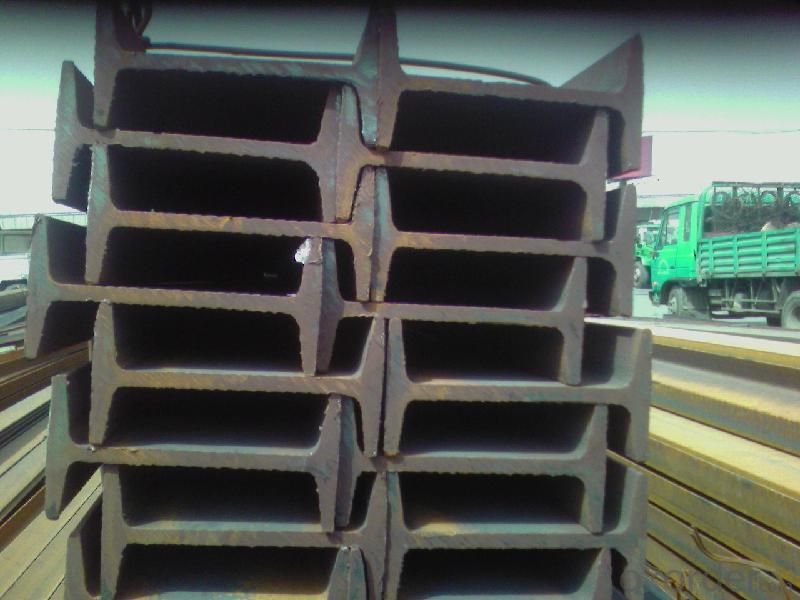
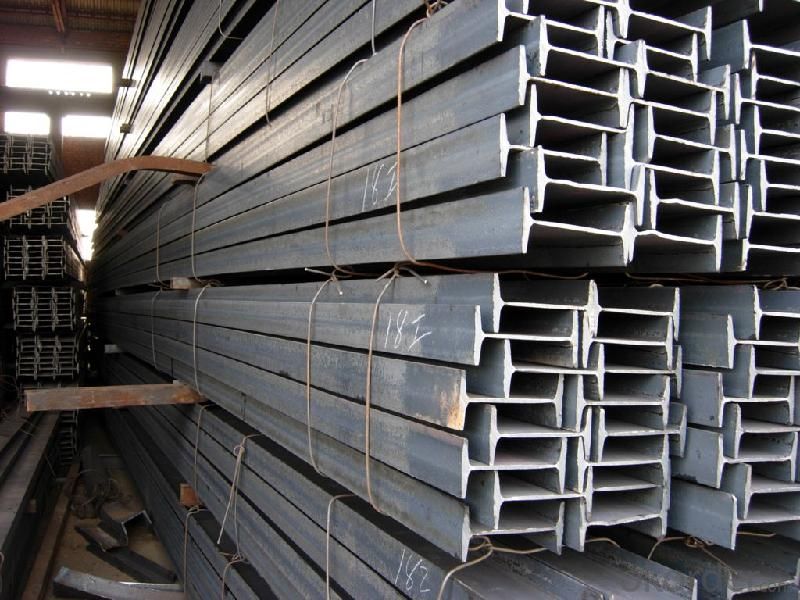
- Q: Are steel I-beams suitable for supporting rooftop communication antennas?
- Yes, steel I-beams are suitable for supporting rooftop communication antennas. Steel I-beams are known for their high strength and durability, making them an ideal choice for supporting heavy loads such as communication antennas. The structural integrity and load-bearing capacity of steel I-beams ensure that the antennas remain stable and secure on the rooftop. Additionally, steel I-beams can be designed and fabricated to specific dimensions and specifications, providing a customized solution for the unique requirements of rooftop communication antennas. Overall, steel I-beams are a reliable and commonly used option for supporting rooftop communication antennas due to their strength, durability, and adaptability.
- Q: Can steel I-beams be used in hospitals?
- Yes, steel I-beams can be used in hospitals. Steel I-beams are commonly used in construction due to their strength, durability, and load-bearing capabilities. In hospitals, they can be used to provide structural support for the building, especially in areas that require large open spaces and heavy equipment, such as operating rooms or diagnostic labs. Additionally, steel I-beams can be used to create sturdy and secure frames for doors, windows, and partitions.
- Q: How do you transport and store steel I-beams?
- Careful planning and adherence to safety guidelines are essential when it comes to transporting and storing steel I-beams. Below, you will find the steps involved in this process: 1. Select the appropriate mode of transportation: Typically, steel I-beams are transported using flatbed trucks or trailers. It is important to ensure that the chosen vehicle has the capacity to safely carry the weight and size of the I-beams. 2. Secure the I-beams for transport: Prior to loading the I-beams onto the vehicle, it is crucial to secure them properly to prevent any movement during transit. To achieve this, use robust straps, chains, or clamps to secure the I-beams to the flatbed. Ensure that they are evenly distributed and balanced. 3. Determine weight restrictions and comply with regulations: Familiarize yourself with the weight restrictions and regulations governing the transportation of goods in your area. It is important to ensure that the combined weight of the I-beams, vehicle, and any additional equipment falls within the permitted limits. 4. Arrange for specialized equipment if necessary: In the event that the I-beams are too long or heavy to be loaded or unloaded manually, you may need to make arrangements for specialized equipment such as cranes or forklifts. Take care to choose equipment that is suitable for the weight and size of the I-beams. 5. Store the I-beams in a controlled environment: If you need to store the I-beams for an extended period, it is crucial to protect them from environmental factors that could cause corrosion or damage. Store them in a covered and dry area to shield them from rain, snow, or excessive humidity. 6. Properly stack and support the I-beams: When storing the I-beams, stack them in a manner that ensures stability and prevents any bending or warping. Employ wooden or steel pallets to provide support for the I-beams and distribute the weight evenly. 7. Perform regular inspections and maintenance on the stored I-beams: It is important to periodically inspect the stored I-beams to ensure they remain in good condition. Look out for signs of corrosion, damage, or deformation. If any issues are detected, take appropriate measures to prevent further deterioration. Always remember to adhere to local regulations and safety guidelines when transporting and storing steel I-beams. Seeking advice from professionals or experienced individuals in the steel industry can provide valuable insights and guidance for a safe and efficient process.
- Q: What are the independent foundations of the square column and the I-beam column?
- The steel column baseboard size is known, the independent foundation short column size request is bigger than the column baseboard, each side 100, and is bigger than the anchor bolt each side 5D and 150.
- Q: What is the difference between steel tubes such as channel steel and square tube?
- The use of square construction, machinery manufacturing, shipbuilding, steel construction projects, solar power support, steel structure engineering, power engineering, power plant, agricultural and chemical machinery, glass curtain wall, car chassis, airport, boiler construction, highway railings, housing construction, pressure vessels, oil tanks, bridges, power station equipment. Cranes and other high load welding etc..
- Q: What are the different types of steel reinforcements used in I-beams for renovations?
- I-beam renovations utilize different types of steel reinforcements. These include: 1. Mild Steel Reinforcement: The most common type, known for its strength, durability, and cost-effectiveness. Used when high strength is not necessary. 2. High-Strength Low-Alloy (HSLA) Steel Reinforcement: Offers higher strength and better corrosion resistance than mild steel. Used in structural applications with greater load-bearing capacity or in corrosive environments. 3. Carbon Steel Reinforcement: Contains higher carbon content, enhancing strength and hardness. Used in heavy-duty construction or applications requiring high strength. 4. Stainless Steel Reinforcement: Emphasizes exceptional corrosion resistance. Suitable for coastal or high-humidity areas and applications where aesthetics matter. 5. Galvanized Steel Reinforcement: Coated with zinc to protect against corrosion. Commonly used in outdoor or exposed settings exposed to moisture, chemicals, or harsh weather conditions. It is important to consider load-bearing requirements, environmental conditions, and budget constraints when choosing steel reinforcement for I-beam renovations. Consulting a structural engineer or construction professional is recommended to determine the most suitable reinforcement for a specific project.
- Q: Can steel I-beams be customized to specific project requirements?
- Yes, steel I-beams can be customized to specific project requirements. Steel I-beams are highly versatile and can be fabricated to meet unique specifications. The customization process involves adjusting the dimensions, lengths, and shapes of the beams to suit the project's specific load-bearing requirements. This can include altering the height, width, and thickness of the flanges and web of the beam. Additionally, steel I-beams can be customized with various surface treatments such as galvanization or painting to enhance their durability and corrosion resistance. Overall, the ability to customize steel I-beams allows for optimal structural design and ensures that they meet the exact needs of the project at hand.
- Q: How do steel I-beams transfer loads and distribute weight in a structure?
- Steel I-beams are commonly used in construction to transfer loads and distribute weight in a structure due to their unique design and properties. The shape of an I-beam, resembling the letter "I" with a web in the middle and two flanges on either side, allows it to efficiently carry and distribute loads. When a load is applied to an I-beam, such as the weight of a floor or roof above, the load is transferred from the top flange to the web and then to the bottom flange. The web, which is located in the center of the beam, acts as a vertical support that resists the bending forces applied to the beam. The flanges, on the other hand, act as horizontal supports and provide additional strength to the beam. They are typically wider and thicker than the web, allowing them to resist tension and compression forces. The top flange resists compression forces, while the bottom flange resists tension forces. By combining these two structural elements, the I-beam can effectively transfer loads and distribute weight across its length. The load is evenly distributed along the length of the beam, reducing the stress and preventing any localized points of failure. Additionally, the I-beam's design allows for a high strength-to-weight ratio, making it ideal for supporting heavy loads over long spans. The shape of the beam provides a significant amount of strength and stability while minimizing the amount of material needed, resulting in a lighter weight structure. Overall, steel I-beams are crucial in construction as they provide a reliable and efficient means of transferring loads and distributing weight in a structure. Their unique design allows for optimal strength and stability, ensuring the structural integrity of buildings and other load-bearing structures.
- Q: Are there any limitations on the length of steel I-beams?
- The length of steel I-beams is subject to limitations. These limitations stem from the manufacturing process, transportation restrictions, and the structural needs of the specific application. When it comes to manufacturing, the length of steel I-beams is primarily restricted by the size of the equipment employed in their production. Steel mills utilize machinery designed for shaping steel into different forms, including I-beams. These machines have their own maximum length limitations. Transportation constraints also contribute to the limitation of steel I-beam lengths. Longer beams may pose difficulties during transportation due to weight restrictions, road or bridge limitations, or logistical obstacles. Compliance with local regulations and transportation capabilities necessitates consideration of the beams' size and weight. Additionally, the structural requirements of the application influence the length of steel I-beams. Longer beams may require additional support, such as intermediate columns or bracing, to ensure structural stability. The beam's strength and rigidity must be evaluated in relation to the span it is intended to cover. In conclusion, although there are no universal fixed limits on the length of steel I-beams, their dimensions are generally determined by the capabilities of the manufacturing process, transportation restrictions, and the structural demands of the particular application.
- Q: Can steel I-beams be used in shopping malls or commercial buildings?
- Certainly, shopping malls or commercial buildings can make effective use of steel I-beams. In fact, these structures frequently employ steel I-beams in their construction due to their remarkable strength, durability, and versatility. Steel I-beams possess exceptional load-bearing capabilities, enabling them to bear heavy loads and endure significant levels of stress. Consequently, they are highly suitable for application in expansive, unobstructed areas such as shopping malls or commercial buildings, where wide spans and open floor plans are desired. Moreover, steel I-beams exhibit resistance to fire and other natural elements, rendering them a secure and dependable choice for providing structural support in these types of edifices.
Send your message to us
IPE Beam 80mm-270mm with Material Grade GB-Q235
- Loading Port:
- Tianjin
- Payment Terms:
- TT or LC
- Min Order Qty:
- 25 m.t.
- Supply Capability:
- 10000 m.t./month
OKorder Service Pledge
OKorder Financial Service
Similar products
Hot products
Hot Searches
Related keywords
